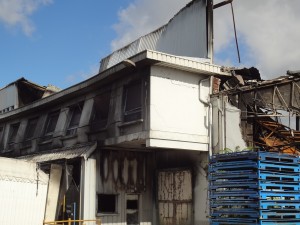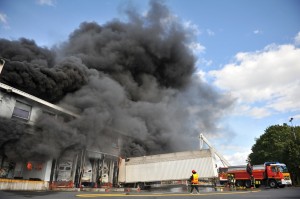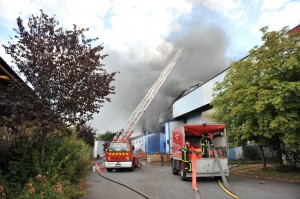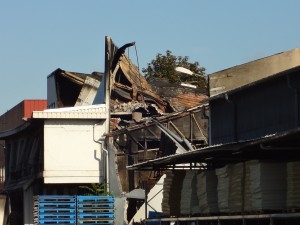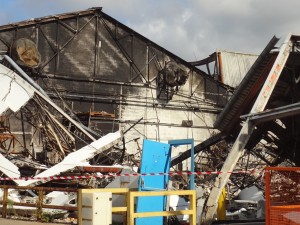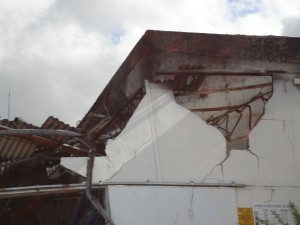Fire broke out at 4:12 pm in the foam and textile storage building of a lower-tier Seveso-rated mattress factory. The watchman noticed a smoke release near the building and alerted the on-call fire-fighter to survey the site. As the smoke plume grew, the watchman notified external first responders before on-site emergency personnel returned. The police evacuated 200 neighbours due to the thick black smoke plume. In arriving at the scene, first responders implemented their facility plan on record by deploying 11 water hoses. The internal emergency plan was activated at 4:46 pm. The blaze was contained by 7:30 pm and extinguished at 11:10 that night. A monitoring system was set up through 5:30 the next afternoon. The neighbours, evacuated for 2 hours, returned home around 8 pm.
The fire destroyed a 1,400 m³ of a honeycomb foam warehouse along with a two-story building dedicated to mattress finishing and shipping, in all 2,500 m² of building space. A 3rd structure was damaged; 130 of the 380 employees were made redundant. The cause of this accident could not be determined; malicious act was suspected and an investigation launched.
The high-volume expansion foam sprinkling system was triggered, but since the exterior doors were open, the foam flowed outside instead of filling the ignited storage cell. This flow impeded fire-fighter access. Also, a walkway connecting 2 buildings had not been fitted with fire doors. Nonetheless, fire-fighters were still able to prevent spreading via this walkway. In the absence of a shut-off valve, the extinction water was discharged into the SEINE. It was only when the fire had stopped raging that fire-fighters installed a system to block sewer outlets so as to channel the water to the site’s northern section, equipped with a shut-off valve, making it possible to contain 400 m³ of extinction water (plus another 200 m³ with a lift pump).
Inspectors of classified facilities underscored the site’s lack of risk control measures. The damaged building, not exposed to the flames and separated from the foam warehouse by a fire wall, whose structure had been deformed was no longer secure and condemned, which prevented all subsequent entry. It still contained however 1,000 m³ of “cores” (bare mattresses and foam blocks without envelope protection), latex and highly-flammable polyurethane. Moreover, electricity service was shut off, deactivating the fire detection system. The extinction devices used to fight the blaze were no longer operational since the water and emulsifier reserves were both empty. Another critical aspect of the emergency response was to avoid spreading via the walkway connecting the mattress finishing and shipping building to an adjacent building. A second walkway also existed between the subsequently damaged building, at the time devoid of fire detection or protection, and the core production “chemicals” buildings. Given the large quantities of flammable substances in this building and the site’s deteriorated safety conditions, inspectors of classified facilities proposed that the local government authority issue an emergency order to adopt all appropriate measures intended to compensate for the lack of detection and automatic extinction in the building, more specifically by reactivating the high-volume foam extinction system, which is the only means for fighting latex foam fires. This order also proposed adopting all measures serving to prevent fire spreading from this building to the foam production buildings, including in particular disassembly of the walkway.



